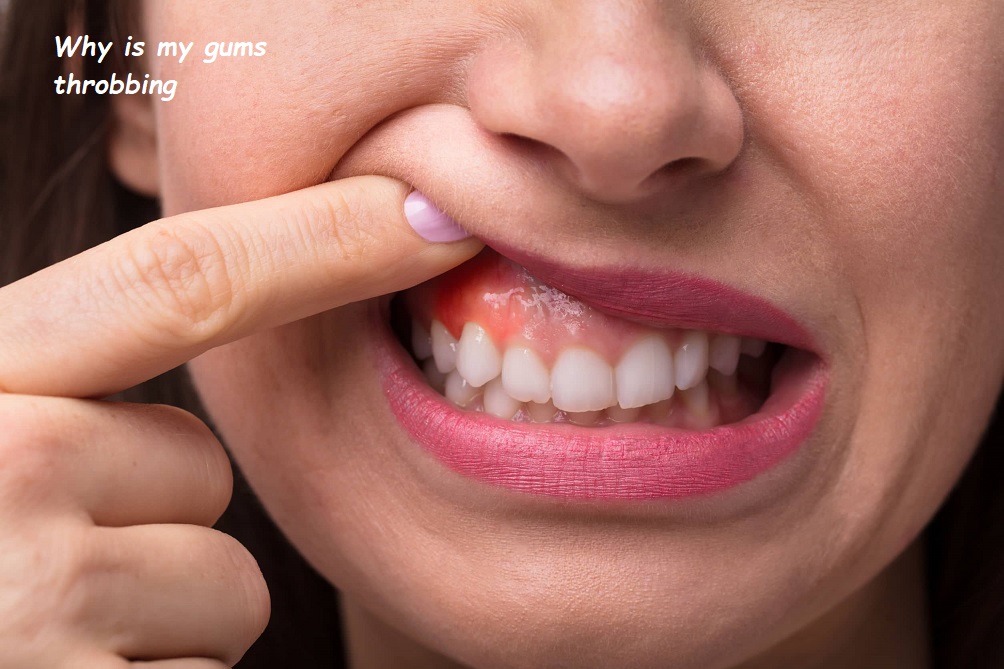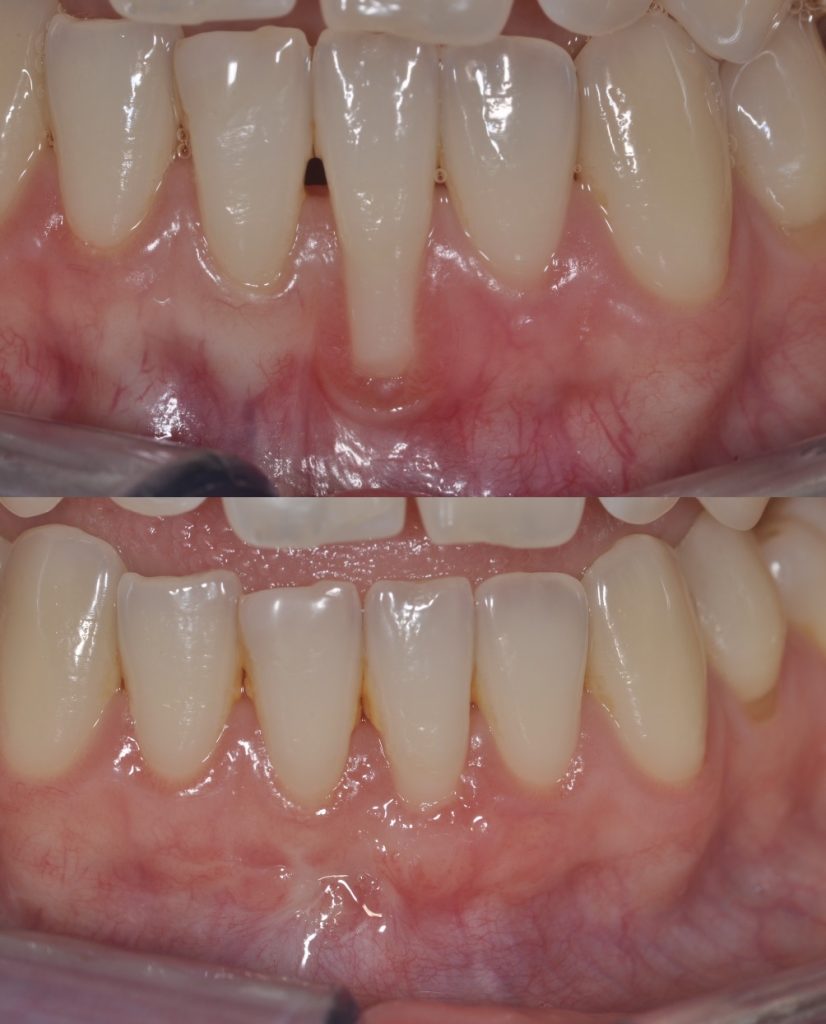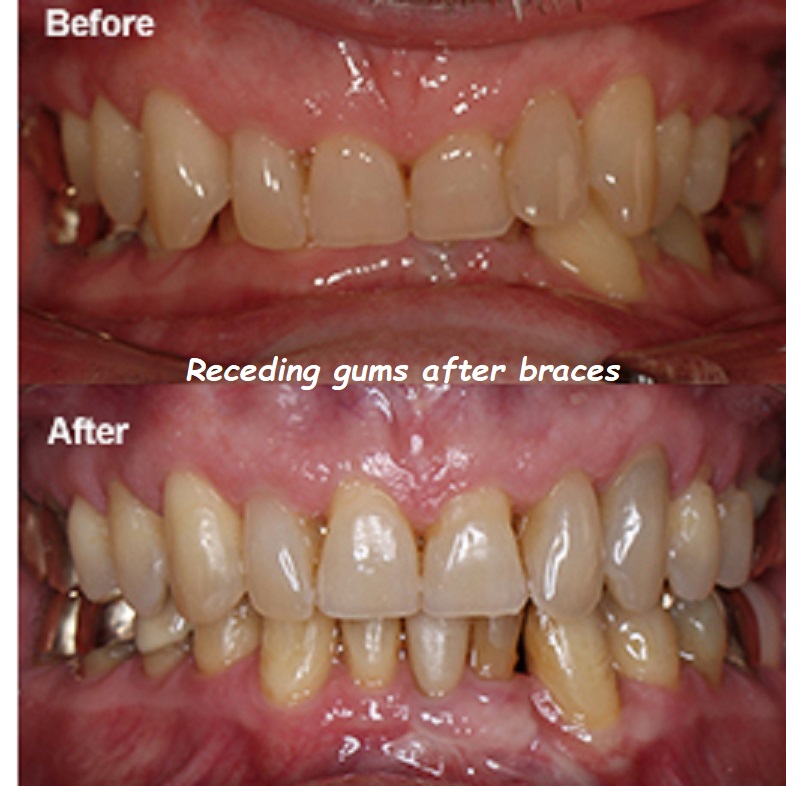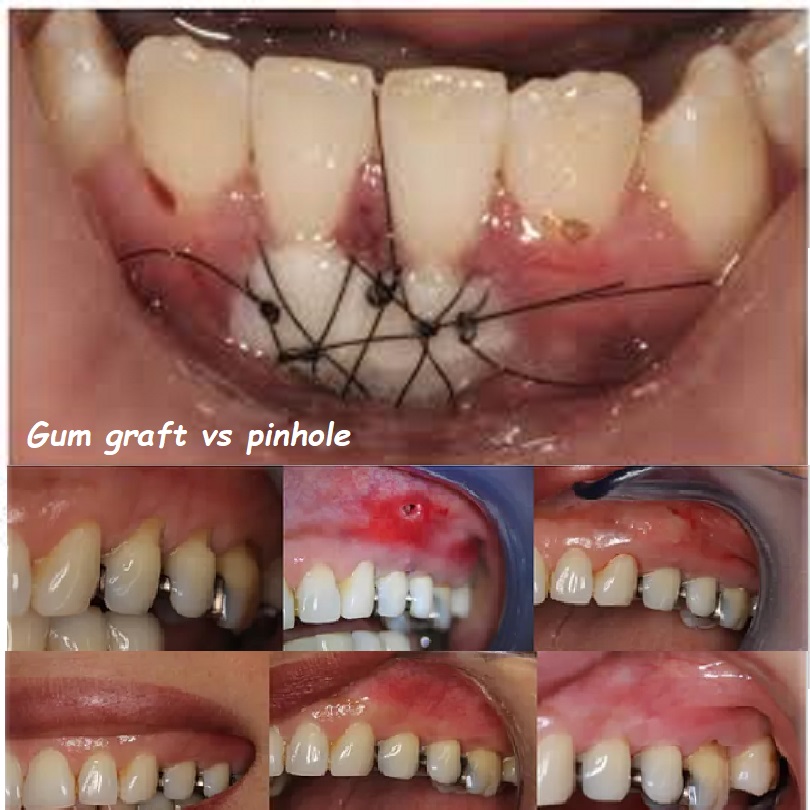healthy gums color
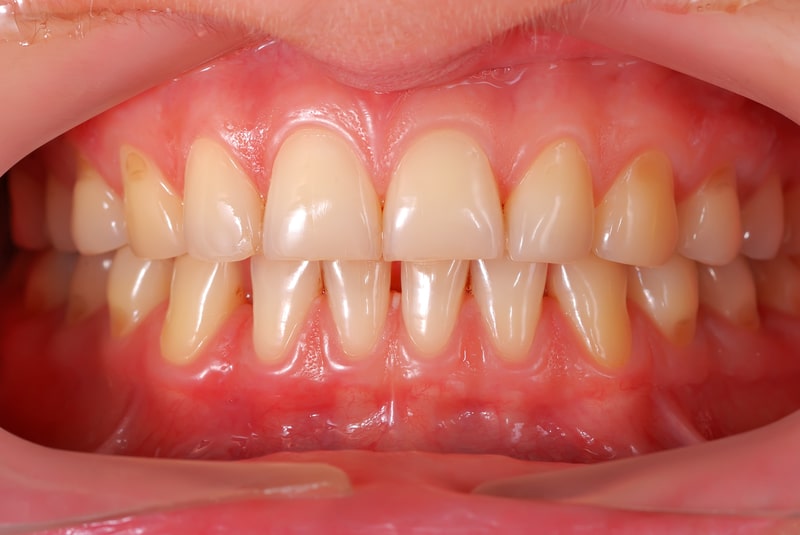
The Ideal Healthy Gums Color: Understanding and Achieving Optimal Gum Health
Gum health is a vital component of overall oral hygiene, and the color of your gums can provide significant insights into their condition. Knowing what a healthy gums color looks like can help you maintain proper oral hygiene and identify potential issues early. This comprehensive guide will delve into the characteristics of healthy gums, the causes and implications of different gum colors, preventive measures for maintaining healthy gums color, and the treatments available for restoring gum health.
What is the Healthy Gums Color?
- Characteristics of Healthy Gums Color
- Pink to Coral Hue: The most commonly recognized healthy gums color is pink or coral. This color signifies good blood flow and the absence of inflammation or infection.
- Uniform Coloration: Healthy gums typically have a uniform color without dark patches or areas of significant discoloration. Consistency in gum color across the mouth indicates overall gum health.
- Firmness and Texture: Healthy gums not only have a specific color but also exhibit a certain texture. They should be firm, resilient, and slightly stippled (orange peel-like). This texture reflects the presence of strong connective tissue and healthy gum fibers.

Causes and Implications of Different Gum Colors
- Red or Inflamed Gums
- Causes:
- Gingivitis: Redness in the gums is often an early sign of gingivitis, a mild form of gum disease caused by plaque buildup along the gum line.
- Hormonal Changes: Hormonal fluctuations during pregnancy, menstruation, or menopause can increase gum sensitivity and inflammation, leading to redness.
- Medications: Some medications, such as certain blood pressure drugs or contraceptives, can cause gum redness and swelling.
- Implications:
- Red or inflamed gums indicate that the gums are irritated and possibly infected. If left untreated, gingivitis can progress to more severe gum disease, such as periodontitis, which can lead to tooth loss and other health issues.
- Causes:
- Pale or White Gums
- Causes:
- Anemia: A common cause of pale or white gums is anemia, a condition where the body lacks enough healthy red blood cells to carry adequate oxygen to the tissues.
- Leukoplakia: White patches on the gums can be a sign of leukoplakia, a condition characterized by thickened, white patches that can be precancerous.
- Fungal Infections: Oral thrush, a fungal infection caused by Candida, can lead to white, creamy patches on the gums.
- Implications:
- Pale or white gums suggest a lack of sufficient blood flow or potential underlying health conditions. These symptoms warrant a medical or dental evaluation to identify and treat the root cause.
- Causes:
- Dark or Black Gums
- Causes:
- Melanin Pigmentation: Naturally dark or black gums can be due to higher melanin levels, particularly in individuals with darker skin tones. This is a normal variation and not indicative of disease.
- Smoker’s Melanosis: Smoking can cause increased melanin production in the gums, leading to dark spots or patches.
- Amalgam Tattoos: Dental work involving amalgam fillings can sometimes leave dark spots on the gums, known as amalgam tattoos.
- Implications:
- While naturally dark gums due to pigmentation are harmless, dark spots caused by smoking or dental work should be monitored. Any sudden changes in gum color should be evaluated by a dentist to rule out malignancy or other health issues.
- Causes:
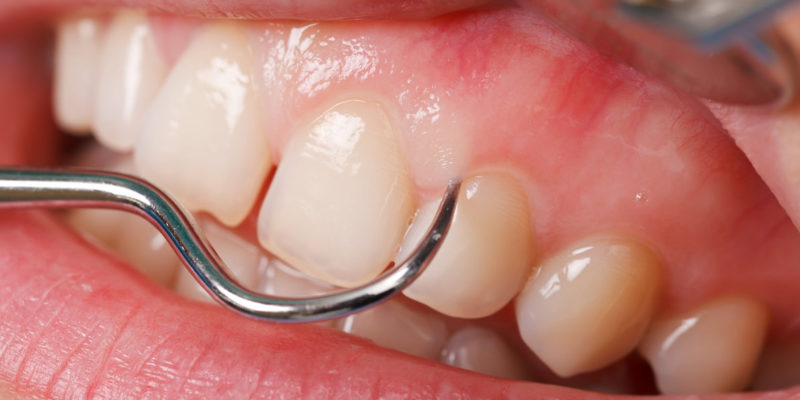
Preventive Measures for Maintaining Healthy Gums Color
- Optimal Oral Hygiene Practices
- Brushing: Brush your teeth at least twice a day using a soft-bristled toothbrush and fluoride toothpaste. Ensure you brush along the gum line to remove plaque and prevent gum disease.
- Flossing: Floss daily to remove plaque and food particles from between the teeth and under the gum line. This practice helps maintain healthy gums color by preventing inflammation and infection.
- Antibacterial Mouthwash: Use an antibacterial mouthwash to reduce bacteria and plaque in the mouth, contributing to healthier gums.
- Regular Dental Visits
- Professional Cleanings: Schedule regular dental cleanings to remove tartar buildup that cannot be removed by brushing and flossing alone. Professional cleanings help maintain healthy gums color by preventing gum disease.
- Routine Check-ups: Regular dental check-ups allow your dentist to monitor your gum health and identify any changes in gum color or other signs of oral health issues early.
- Healthy Lifestyle Choices
- Quit Smoking: Smoking is a major risk factor for gum disease and can cause discoloration of the gums. Quitting smoking can significantly improve your gum health and restore a healthy gums color.
- Balanced Diet: A diet rich in vitamins and minerals, particularly vitamin C and calcium, supports healthy gums. Avoid sugary and acidic foods that can contribute to plaque buildup and gum disease.
- Hydration: Drink plenty of water to keep your mouth hydrated and help wash away food particles and bacteria that can harm your gums.
- Stress Management
- Stress Reduction Techniques: Practice stress reduction techniques such as meditation, exercise, and deep breathing to support your immune system and overall health. Stress can weaken the immune system, making it harder for the body to fight off infections, including gum disease.
Treatments for Restoring Healthy Gums Color
If your gums are showing signs of disease or discoloration, it’s important to seek treatment promptly to restore a healthy gums color. Here are some common treatments:
- Professional Dental Cleanings
- Prophylaxis: Regular professional cleanings, known as prophylaxis, remove plaque and tartar from above and below the gum line, reducing inflammation and promoting healthy gums color.
- Scaling and Root Planing
- Deep Cleaning: Scaling and root planing is a deep cleaning procedure that removes plaque and tartar from below the gum line and smooths the root surfaces to promote healing and reattachment of the gums to the teeth.
- Antibiotic Therapy
- Control Bacterial Infection: Antibiotics may be prescribed to control bacterial infection and reduce inflammation. They can be taken orally, applied directly to the gums, or placed in periodontal pockets.
- Laser Therapy
- Minimally Invasive Treatment: Laser therapy uses a specialized laser to remove infected gum tissue and bacteria. It is a minimally invasive treatment that can reduce inflammation and promote healing.
- Gum Surgery
- Surgical Treatments: In advanced cases of gum disease, surgical treatments such as flap surgery, soft tissue grafts, and bone grafts may be necessary to restore gum health and support.
- Home Care
- Oral Hygiene: Maintaining good oral hygiene at home is crucial for healing unhealthy gums and restoring healthy gums color. Follow your dentist’s recommendations for brushing, flossing, and using mouthwash.
- Lifestyle Changes
- Healthy Habits: Making healthy lifestyle changes, such as quitting smoking, eating a balanced diet, and managing stress, can support the healing process and prevent the recurrence of gum disease.

The Importance of Regular Monitoring
Regular monitoring of your gum health is essential to ensure that you maintain a healthy gums color and prevent potential issues from escalating. Here’s how you can keep an eye on your gum health:
- Self-Examination
- Regular Checks: Perform regular self-examinations of your gums by looking in the mirror. Check for any changes in color, texture, or appearance. Look for signs of redness, swelling, bleeding, or discoloration.
- Document Changes: Keep a record of any changes you notice in your gums. This can help you track your gum health over time and provide valuable information to your dentist.
- Professional Examinations
- Dental Check-ups: Regular dental check-ups are crucial for monitoring your gum health. Your dentist can identify early signs of gum disease, infections, or other issues and provide appropriate treatment.
- Periodontal Charting: During dental visits, your dentist may perform periodontal charting, which involves measuring the depth of the gum pockets around each tooth. Deep pockets can indicate gum disease.
- Communication with Your Dentist
- Report Symptoms: If you experience any symptoms such as bleeding, pain, swelling, or changes in gum color, report them to your dentist promptly. Early intervention can prevent more serious issues.
- Ask Questions: Don’t hesitate to ask your dentist questions about your gum health and what you can do to maintain or improve it. Your dentist can provide personalized recommendations based on your specific needs.
Case Studies: Healthy Gums Color Restoration
To further illustrate the importance of maintaining a healthy gums color and the effectiveness of treatments, here are two case studies of individuals who successfully restored their gum health:
Case Study 1: Reversing Gingivitis with Improved Oral Hygiene
Background: Anna, a 28-year-old woman, noticed that her gums were red, swollen, and bleeding during brushing and flossing. She also experienced bad breath and a metallic taste in her mouth. Anna had not visited a dentist in over a year and admitted to inconsistent oral hygiene practices.
Diagnosis: Upon visiting her dentist, Anna was diagnosed with gingivitis, the early stage of gum disease caused by plaque buildup along the gum line.
Treatment and Outcome: Anna’s dentist performed a professional cleaning to remove plaque and tartar from her teeth and gums. The dentist also provided Anna with detailed oral hygiene instructions, emphasizing the importance of brushing twice a day, flossing daily, and using an antibacterial mouthwash.
Anna committed to improving her oral hygiene practices and scheduled regular dental check-ups. Within a few weeks, she noticed a significant improvement in her gum health. The redness and swelling subsided, and her gums no longer bled during brushing and flossing. Her bad breath and metallic taste also disappeared.
Conclusion: Anna’s case demonstrates how early intervention and proper oral hygiene can reverse gingivitis and restore healthy gums color. Regular dental visits and consistent oral care are key to preventing the progression of gum disease.
Case Study 2: Treating Periodontitis with Scaling and Root Planing
Background: Mark, a 52-year-old man, experienced severe gum recession, loose teeth, and persistent bad breath. He had been a smoker for 25 years and had not visited a dentist regularly. Mark’s gums were red, swollen, and frequently bled during brushing and eating.
Diagnosis: Mark’s dentist diagnosed him with periodontitis, an advanced stage of gum disease. Periodontitis involves the destruction of the supporting structures of the teeth, including the gums, periodontal ligaments, and bone.
Treatment and Outcome: Mark’s treatment plan included scaling and root planing to remove plaque and tartar from below the gum line and smooth the root surfaces. The dentist also prescribed antibiotics to control the bacterial infection.
Mark was advised to quit smoking and improve his oral hygiene practices. He followed his dentist’s recommendations and made significant lifestyle changes, including quitting smoking and adopting a healthier diet.
Over several months, Mark’s gum health improved. The bleeding and swelling reduced, and his gums began to reattach to the teeth. While some gum recession remained, the progression of the disease was halted, and Mark’s teeth became more stable.
Conclusion: Mark’s case highlights the importance of professional treatment and lifestyle changes in managing advanced gum disease. Scaling and root planing, combined with improved oral hygiene and smoking cessation, can significantly improve gum health and prevent further damage.

Conclusion: The Significance of Healthy Gums Color
Understanding the healthy gums color and recognizing the signs of unhealthy gums are crucial steps in maintaining optimal oral health. Healthy gums are typically pink or coral, firm, and resilient, reflecting good blood flow and the absence of inflammation or infection. On the other hand, unhealthy gums can exhibit a range of colors, including red, white, pale, or dark, each indicating different potential issues.
By adopting good oral hygiene practices, making healthy lifestyle choices, and seeking prompt treatment for any gum issues, you can maintain a healthy gums color and prevent gum disease. Regular self-examinations and dental check-ups are essential for monitoring your gum health and addressing any changes early.
Ultimately, maintaining a healthy gums color is not only about aesthetics but also about ensuring the overall health and longevity of your teeth and gums. Prioritizing gum health is a vital component of a comprehensive approach to oral hygiene and overall well-being.
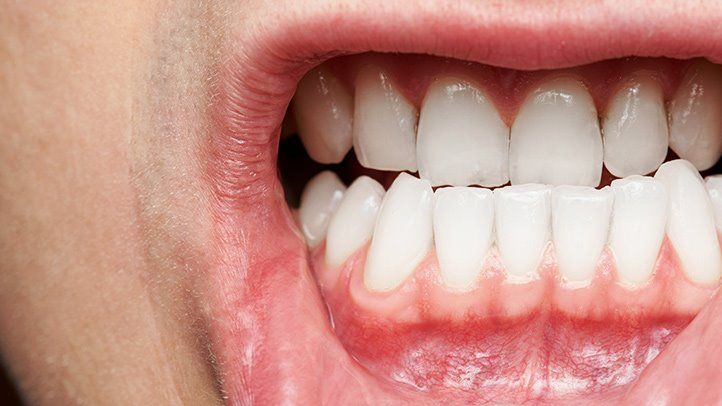
- What is the perfect gum color? The ideal gum color for most people is a shade of pink. However, the “perfect” gum color can vary slightly depending on individual factors such as ethnicity and natural pigmentation:
- Light to Medium Pink: Generally considered a sign of healthy gums.
- Consistency: The color should be uniform without dark patches or areas of significant discoloration.
- Texture: Healthy gums are firm and may have a stippled or orange-peel-like texture.
While pink is the most common healthy gum color, some people naturally have darker or lighter gums due to genetic factors.
- What color should healing gums be? Healing gums typically undergo changes in color as they recover from inflammation or injury:
- Pale Pink: As healing progresses, the gums may turn a pale pink as inflammation subsides.
- Red or Darker Pink: Initially, healing gums may appear redder due to increased blood flow and inflammation in the early stages of healing.
- Uniform Color: As healing continues, the gums should regain a more uniform pink color, indicating reduced inflammation and improved health.
It’s normal for healing gums to go through these color changes. Persistent redness, swelling, or discoloration may indicate ongoing inflammation or infection and should be evaluated by a dentist.
- Are healthy gums white or pink? Healthy gums are generally pink rather than white:
- Pink Gums: Typically indicate healthy tissue with good blood flow.
- Firm Texture: Healthy pink gums should also be firm and resilient.
- Uniform Color: The pink color should be consistent across the gum tissue without white patches or discoloration.
White gums can be a sign of several conditions, including leukoplakia, fungal infections, or anemia, and should be evaluated by a dentist if noticed.
-
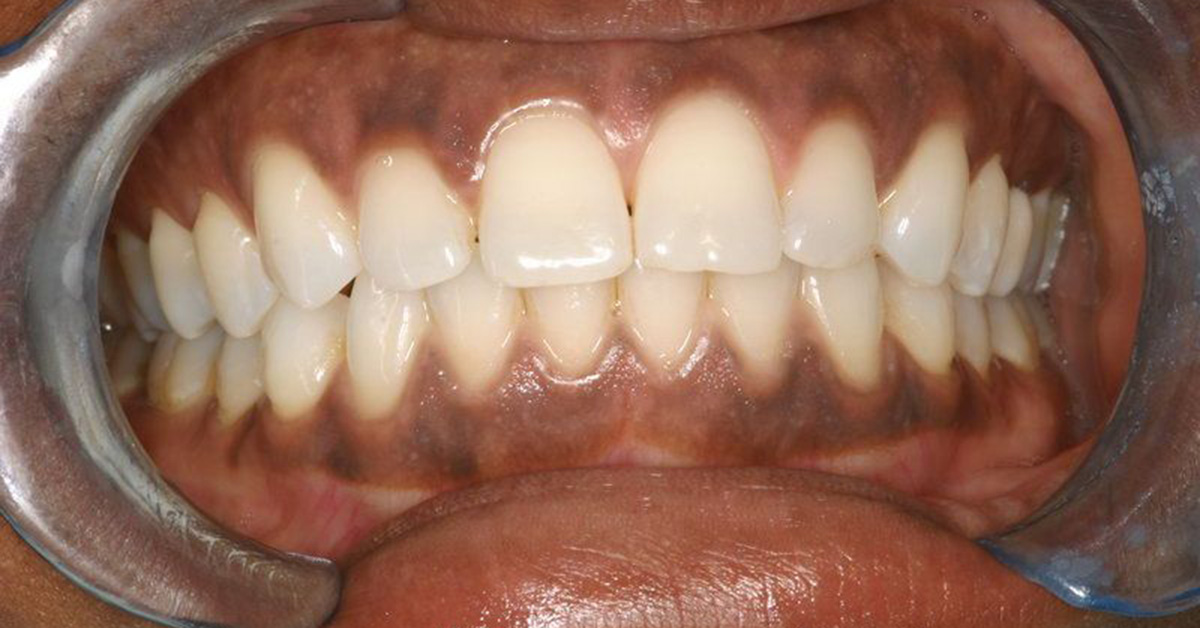
why are my gums black - Are dark gums good? Dark gums can be perfectly healthy and are often a result of natural pigmentation rather than a health issue:
- Melanin Pigmentation: Darker gums can be due to higher melanin levels, which are more common in individuals with darker skin tones.
- Uniform Color: Healthy dark gums should have a uniform color without patches of redness, swelling, or other signs of inflammation.
- No Symptoms: As long as there are no symptoms like pain, bleeding, or swelling, dark gums are usually not a cause for concern.
However, sudden changes in gum color, such as new dark patches or discoloration, should be evaluated by a dentist to rule out underlying health issues.


